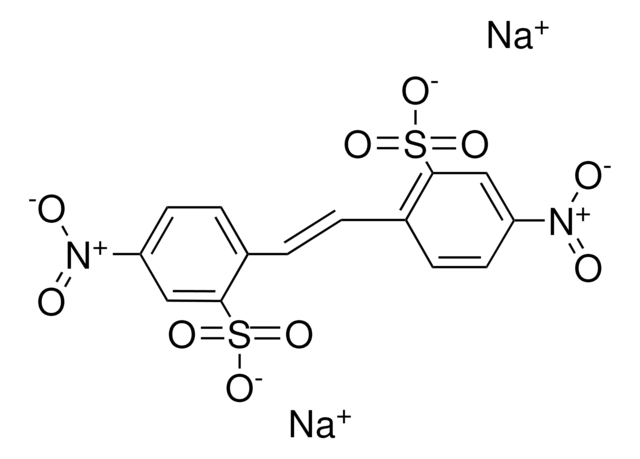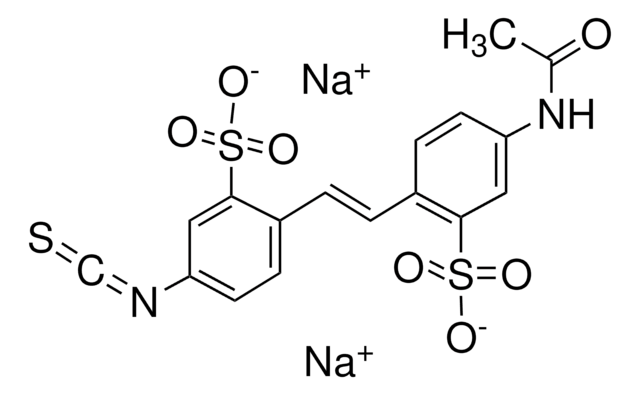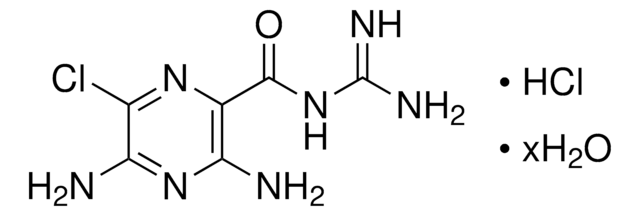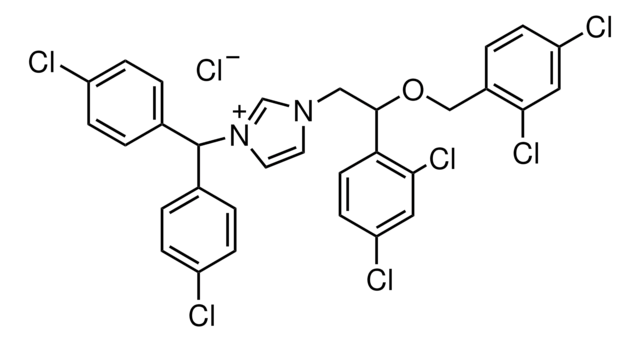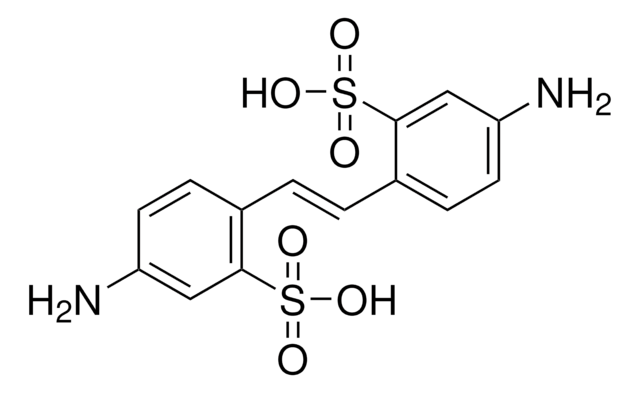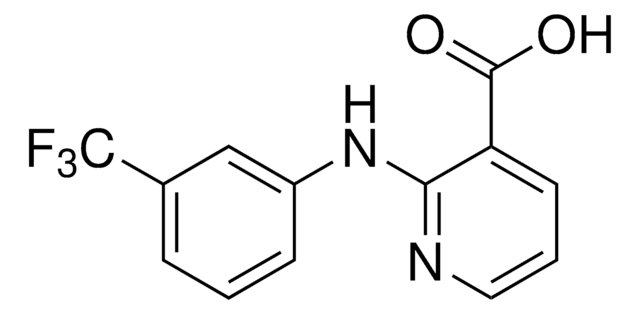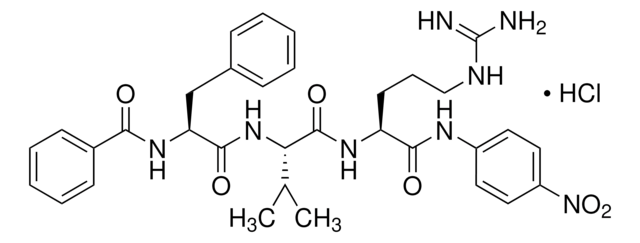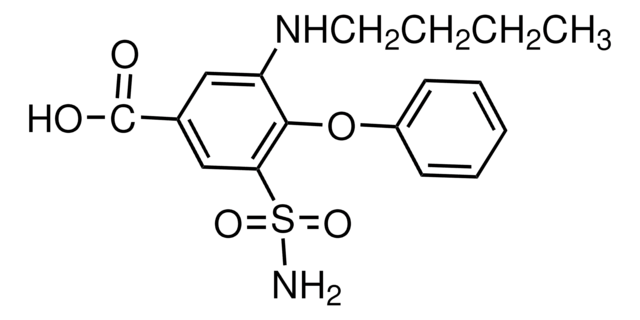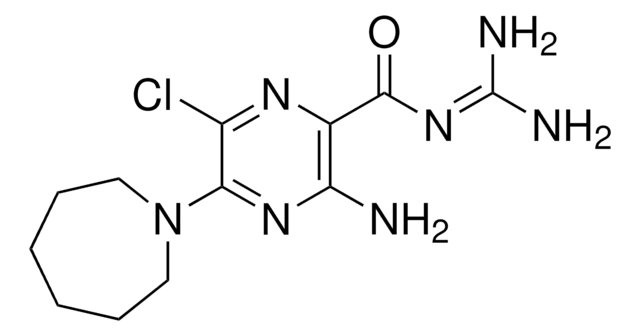D3514
4,4′-Diisothiocyanatostilbene-2,2′-disulfonic acid disodium salt hydrate
≥80% (elemental analysis), powder
Sinónimos:
DIDS, Disodium 4,4′-diisothiocyanatostilbene-2,2′-disulfonate
About This Item
Productos recomendados
assay
≥80% (elemental analysis)
form
powder
reaction suitability
reagent type: cross-linking reagent
color
yellow
solubility
0.1 M potassium bicarbonate: 50 mg/mL
storage temp.
2-8°C
SMILES string
[Na+].[Na+].[O-]S(=O)(=O)c1cc(ccc1\C=C\c2ccc(cc2S([O-])(=O)=O)N=C=S)N=C=S
InChI
1S/C16H10N2O6S4.2Na/c19-27(20,21)15-7-13(17-9-25)5-3-11(15)1-2-12-4-6-14(18-10-26)8-16(12)28(22,23)24;;/h1-8H,(H,19,20,21)(H,22,23,24);;/q;2*+1/p-2/b2-1+;;
InChI key
GEPAYBXVXXBSKP-SEPHDYHBSA-L
¿Está buscando productos similares? Visita Guía de comparación de productos
Application
- as band3 protein inhibitor in rabbits(19)
- for the inhibition of bicarbonate transporters in brain slice tissue(20)
- as HCO3-/Cl- exchanger (anion exchanger) in embryos(21)
Biochem/physiol Actions
signalword
Danger
Hazard Classifications
Eye Irrit. 2 - Resp. Sens. 1 - Skin Irrit. 2 - STOT SE 3
target_organs
Respiratory system
Storage Class
11 - Combustible Solids
wgk_germany
WGK 3
flash_point_c
Not applicable
ppe
dust mask type N95 (US), Eyeshields, Faceshields, Gloves
Certificados de análisis (COA)
Busque Certificados de análisis (COA) introduciendo el número de lote del producto. Los números de lote se encuentran en la etiqueta del producto después de las palabras «Lot» o «Batch»
¿Ya tiene este producto?
Encuentre la documentación para los productos que ha comprado recientemente en la Biblioteca de documentos.
Los clientes también vieron
Nuestro equipo de científicos tiene experiencia en todas las áreas de investigación: Ciencias de la vida, Ciencia de los materiales, Síntesis química, Cromatografía, Analítica y muchas otras.
Póngase en contacto con el Servicio técnico